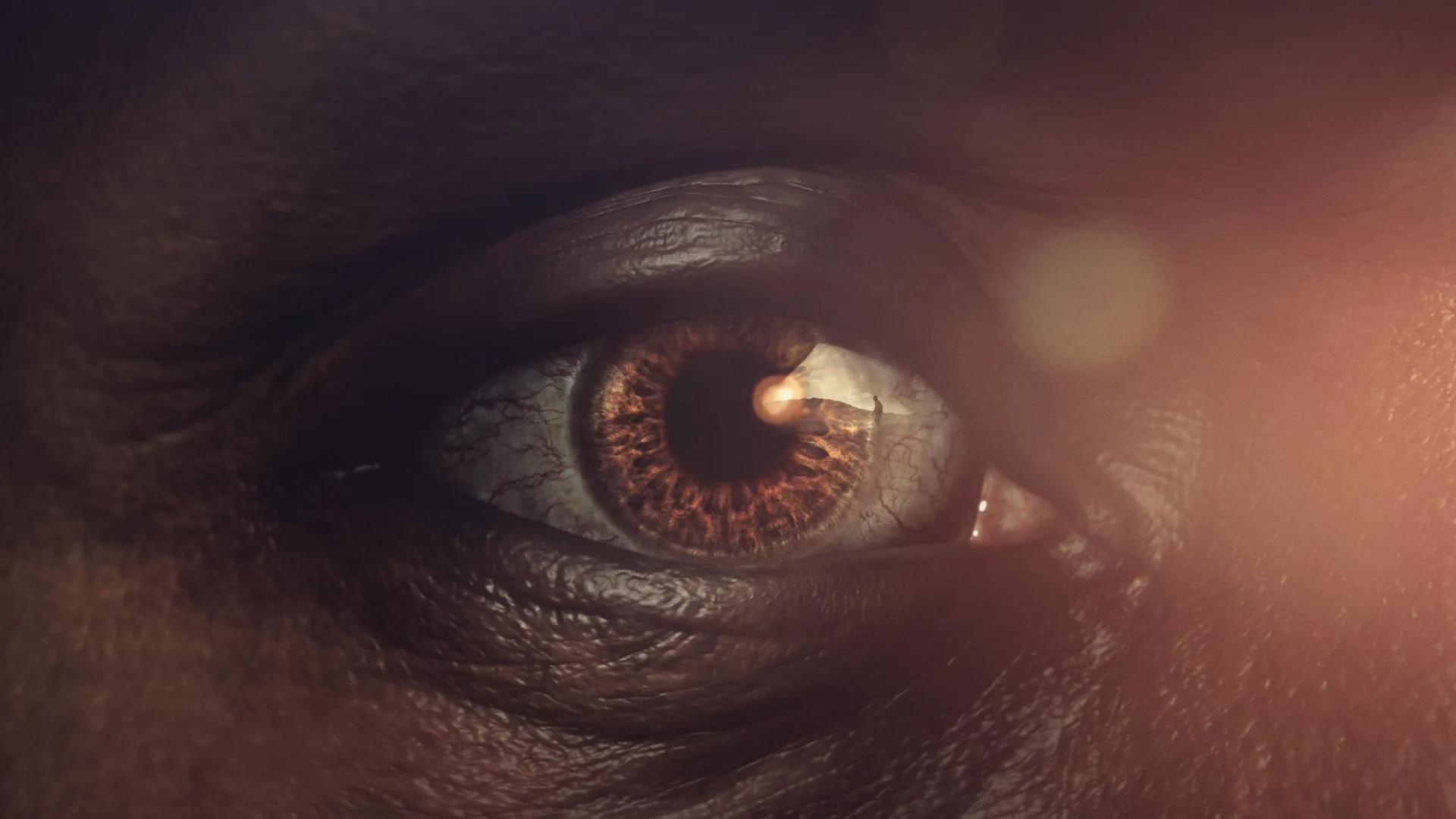Previous Episode

episode
Virginia Beach, Hour 3
A Ghisi engraving, a Louis Vuitton trunk, and a Mercury Capsule antenna. One is the top find!
Next Episode
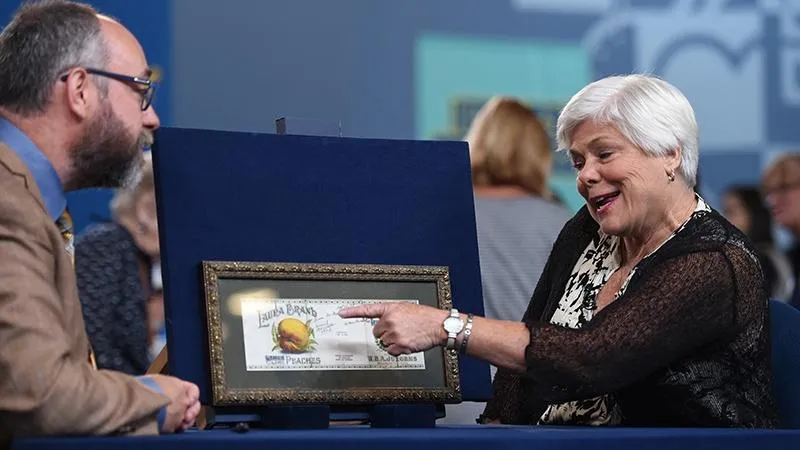
episode
Joe Strummer's boots, a Ned Hanlon championship group & a Grant Wood lithograph.
HOST: ANTIQUES ROADSHOW is discovering the treasures of the City Beautiful, Orlando, Florida.
APPRAISER: When you were walking up in the line, the three of us were just like... bing!
GUEST: All the people who made fun of me all these years I can... I'll have the last laugh.
HOST: ANTIQUES ROADSHOW knows that if you're a fan of Louis Comfort Tiffany, the Charles Hosmer Morse Museum in Winter Park is a must-see. Architectural objects, leaded glass lamps, pottery, and jewelry are just some of the exquisite treasures on display. Tiffany's artworks have popped up at ROADSHOW before. Could this necklace have been designed by Louis himself? Check it out.
GUEST: This was gifted to me by a woman that was in my church. She became very ill and had no family or anything, and we sort of took her into our family and took care of her. And she insisted that I take this piece as a gift. It's from the William Becker family. Becker had quite a big place in Bolton Lake, and he was the one that gave it to his wife, and his wife gave it to her cousin, and her cousin gave it to me. And that's how I came by it.
APPRAISER: Bolton Lake, Lake George.
GUEST: Bolton Lake. Millionaire Row, yes. He had a 40-room house. Of course it's all gone, but it was beautiful. It was beautiful.
APPRAISER: And you showed me some great newspaper articles, and he owned the Sagamore Hotel, you say.
GUEST: Yes, he did.
APPRAISER: Among other things.
GUEST: Yeah.
APPRAISER: He was from Manhattan, he lived in Manhattan.
GUEST: Oh he did?
APPRAISER: Yeah.
GUEST: Oh, I didn't know that.
APPRAISER: So it's 18-karat yellow gold.
GUEST: Okay.
APPRAISER: And then in the center you have what we call a peridot, peridots being green and very beautiful. They're not particularly expensive stones. It weighs about eight carats.
GUEST: Oh, wow.
APPRAISER: If you look at these stones that are set kind of freeform around the outside edge, they're diamonds, but they're not all white diamonds. They're mixed in color. You have some white, some yellow. You have some that are a little bit champagne.
GUEST: Oh, my goodness.
APPRAISER: So the way the gold wraps around it, the gold, the 18-karat and the diamonds, there's this little bit of movement in the design. I also want to show everybody this piece is just as beautiful from the back.
GUEST: I agree.
APPRAISER: Yeah, like so much good jewelry is. So if we flip it over, you can see all this beautiful cannetille type of wire work. It's all done by hand.
GUEST: Really?
APPRAISER: Very intricate, very beautiful. And very indicative of a few designers who were working in the late 1800s to the early 1900s in America. Now, I don't think anybody but you and I know who made this. Tell them, I'll show them.
GUEST: I did find the little tag that said Tiffany Company.
APPRAISER: In New York.
GUEST: New York.
APPRAISER: All right, but this piece goes a little further than that. I showed it to my colleagues, and we think you could attribute it to Louis Comfort Tiffany.
GUEST: Oh, really?
APPRAISER: The gent who made all the beautiful...
GUEST: Great... father, yes.
APPRAISER: Right. Now, he worked on his own and the two companies were always separate. There is a period where he comes under the same umbrella after his father dies. And Tiffany & Co., New York, is retailing items that he made under Louis Comfort Tiffany. So we feel it could be attributed to him.
GUEST: Wonderful.
APPRAISER: As far as the type of construction and when something like this was made, and we kind of look at the hallmark, we look at the design and everything. I would say probably around 1910. Also you just look at the stylized chain on the necklace. They're little cast sections, but they're all hand-made. Now, I talked to my colleagues. There are some people who feel it's 100% right. There are some people who question a little bit. In this day and age, you got to be very, very careful. There are great places to get things like this authenticated. Tiffany & Co. has great archives. Sitting here right now, attributing this to Louis Comfort Tiffany, retailed by Tiffany & Co., New York, I would say that this would auction for $20,000 to $30,000.
GUEST: Holy moly! I don't believe it. Oh, my gosh. That... what a gift, huh?
APPRAISER: A very nice gift.
GUEST: Whoa. I might have to keep this for myself for a while now.
APPRAISER: Yeah, you need to start wearing it.
GUEST: These boots belonged to Joe Strummer, who was the lead singer of the band The Clash. And my husband was starting or thinking about starting a rock and roll magazine, and a punk rock magazine. And he interviewed Joe when they were in their first U.S. tour in 1979. And during the course of the interview, my husband complimented Joe on his boots, and Joe took off his boots and gave him his boots. So we've had these boots for about 35 years. They've been in the corner of a closet, they haven't been worn in our home.
APPRAISER: So this is your husband here, you said, interviewing Joe. And this was 1979?
GUEST: Yeah, it was the first... the Clash's first U.S. tour, as I understand. So they played two shows in Boston, and this would have been one of the shows either at the Orpheum Theatre or in Harvard Square.
APPRAISER: He did this interview, was it published or...
GUEST: When my husband did the interview, he subsequently used an excerpt from the interview as part of his editorial for the opening, the launch of his magazine, which was called Take It Magazine so--
APPRAISER: The magazine was called Take It?
GUEST: Take It Magazine. Joe Strummer had said if you really, really want something, just go ahead and take it. If you want to be relevant, you know, take it, make something happen. I'm paraphrasing, but that appeared in the magazine.
APPRAISER: That is so his spirit. Because at the time, I mean they really came out. They were founded in 1976 as the first wave of British punk.
GUEST: Right.
APPRAISER: And his attitude with everything that was going on politically in England, a lot of disenfranchised industrial workers, former coal miners. His attitude was if you want something, you have to do it for yourself and take it. They were inducted in the Hall of Fame in 2003, a year after he died. He died at 50 years old of a congenital heart defect. And it's very shocking, nobody knew he was sick. So he was taken from us pretty young. One other thing I wanted to point out, we have on the bottom of the boots, which is nearly impossible to see. It's kind of a blind stamp in the leather. It says, "warranted British manufacture." So we know these are of the right materials, everything makes sense. We have the photograph of your husband interviewing him, which is really helpful. Because it establishes that he really did meet him. So at auction, with that information, I think we would expect anywhere between $5,000 and $7,000 for a pair of boots like this.
GUEST: That's pretty amazing.
APPRAISER: There are a lot of pictures of Joe Strummer out there, wearing very similar style boots. Now if we can find pictures from any of those shows in 1979, or any time around then and find this exact pair of boots in a picture, that would be amazing. And it's quite possible to do because I'm sure he was well-photographed during that tour.
GUEST: I know that we have a lot of negatives from that show that I haven't developed yet. This picture was developed to bring to the ROADSHOW, so I will go home and go through those negatives.
APPRAISER: If you do find a picture in your rolls of undeveloped film from this event, that you can clearly see these boots and we can make out the stitch lines, and there's all sorts of things we look for that we can match up pretty precisely. And hopefully we would be able to do that. At auction you could be looking at more like $8,000 to $12,000.
GUEST: Right.
GUEST: I bought it at an estate sale, and the person traveled worldwide. So who knows?
APPRAISER: I'm thinking maybe $500 to $1,000? What would you think, David?
APPRAISER: It's always helpful to have a nude.
APPRAISER: Yeah, in this sort of thing, nudes are good.
GUEST: Okay.
APPRAISER: It's part of the aesthetic, it's Austrian Art Nouveau.
APPRAISER: It's definitely worth more than $20 you paid.
GUEST: Okay.
APPRAISER: Probably it's not worth more than about $100, $125.
GUEST: Okay.
APPRAISER: Really in the run of 1,500 like it is, it's much more decorative than it is valuable.
GUEST: Okay. I'm just excited the fact to know that it's really signed.
APPRAISER: Really signed.
GUEST: And it is worth more than what I paid for it.
APPRAISER: It is worth more, and it's beautiful.
GUEST: Thank you so very much.
GUEST: My husband and I were at a thrift store looking for filing cabinets, and he came across this, and the colors really spoke to him. Funny thing is, the thrift store owner said a lot of people looked at that, but I've already checked it out, and it's not a Picasso. And so we kind of giggled at that.
APPRAISER: And how much did you pay?
GUEST: $25.
APPRAISER: Well, the artist Lee Godie is a wildly colorful, outsider artist who spent most of her life in Chicago. She was born in 1908, but didn't really start working or painting until late '60s. So she was older in age. She had been through a divorce and had lost two children. And she actually elected to live outside and became kind of a very popular folk hero in Chicago.
GUEST: Right.
APPRAISER: Started selling her work at the door of the Art Institute of Chicago. And she died in 1994. This probably would have been painted in the 1980s or so. She used any variety of mediums to paint and was notoriously guarded about personal information. And tended to sell to friends of hers. Especially Chicago-area individuals are very interested in her work. She's heavily collected in that region in particular. And this example, at auction I would expect it to fetch somewhere in the region of $2,000 to $3,000.
GUEST: Wow. That's great. (chuckles)
GUEST: It was at a live auction. They said it was a bear backpack, and I knew it was a puppet, and I fell in love with him. And I was the only bidder. (laughs)
APPRAISER: Well that's great. That's wonderful. Well, it's absolutely, it's Winnie the Pooh, and it's obviously from the '60s movie that Walt Disney did when they adopted Winnie the Pooh. What I think is fantastic is the resemblance to Winnie is just absolutely amazing. And you're right, well, it's not really a puppet as much as it's a ventriloquist dummy. And what's really amazing about it is, it's one of a kind, I'm sure of it. It's a professionally made ventriloquist dummy. If you look at the construction, there's no way this was mass-produced.
GUEST: That's what I thought, yeah.
APPRAISER: Why it was made, for whom. Was it made for Disney? Was it made for an advertising thing? But it perfectly captures Winnie on the show.
GUEST: It does.
APPRAISER: And all the '60s movies. What did you pay for this?
GUEST: Five dollars. (laughs)
APPRAISER: Five dollars. What do you think of that, Winnie? Was that a good buy? (higher pitched) Yes, I'm worth about $500, $600, and that's an auction price.
GUEST: (laughing) Perfect.
APPRAISER: It's hard to say, it's a one-of-a-kind thing. I'd say easily $400 to $600. If the ultimate Pooh collector, they're gonna go crazy for it.
GUEST: Yeah.
APPRAISER: But it's not just for Pooh collecting, it's for ventriloquist doll collecting, ventriloquist dummies. And it's fantastic. I'm really glad you came. (high pitched) Me, too.
GUEST: (laughing) Thank you.
APPRAISER: (high pitched) That's a wrap!
GUEST: This woman is Sidonia Klein Goldman. She was my husband's grandmother, and she lived at the time when women had to do something at home to entertain themselves and as, I would say, a sample of good housekeeping, and she chose china painting. And evidently, she was very good at that, and she graduated into really a very high class of painting.
APPRAISER: Now, these are hand-painted on porcelain plaques. Did she paint in other ways, did she paint other things?
GUEST: Oh, yes, I'd pick up things all the time around the house that have S.K.G. on them, and that's for Sidonia Klein Goldman.
APPRAISER: And did she have a prosperous family?
GUEST: They were very prosperous. Her husband opened up a furniture store in downtown St. Louis.
APPRAISER: Well, these are certainly wonderful examples of American china painting. And as you mentioned, she's an example of the thousands and thousands of women-- and some men-- all over America who took up the pastime of painting on china. Now, most of them would paint on plates or vases or things like that. And some of the more ambitious artists would actually paint on plaques, which could then be hung on the wall like a work of art.
GUEST: That's correct.
APPRAISER: And a lot of the china painters were just not very good, but they enjoyed it. I think it's a good hobby to have. Others were quite good, and then some of them really got very, very skilled. And she obviously was a pretty good artist. These are very nicely done.
GUEST: Oh, good, good.
APPRAISER: We've got one up here of monks with a bunch of fruits and vegetables. And this was done very near the end of her life. She died in 1921.
GUEST: That's correct.
APPRAISER: And this plaque here of two little boys is signed on the back, and it looks like she copied it from something she was seeing in a book or something. But she did a lovely job. Now, these are... two plaques are a contrast in value. Now, this one is larger and this one's a little smaller, but one is worth much more than the other for two reasons. This one here is monks, and it's well done with all the vegetables and everything, which I think are rather great. But as a subject matter, most buyers these days aren't really very interested in monks. And another thing that I noticed is that this one has a lot of scratches on it. There are scratches where something was laid on the surface.
GUEST: Can I tell you what it was?
APPRAISER: Sure, tell me.
GUEST: My husband told me that that plaque was on a table in their hall. And when they came in in the evening, they would throw their keys on it.
APPRAISER: So it's just laying flat like a tray.
GUEST: Yes.
APPRAISER: They scratch very easily, and quite frankly, a scratch on a porcelain plaque is just as bad as a chip or crack in terms of value. It's a bad thing. Now, this one on the other hand is two wonderful little boys, which are very well painted. I mean, children is a universally loved subject matter, and they're beautifully painted. Now, this plaque, because it's so well done, I would say a retail value would be between $400 and $600.
GUEST: Oh, wonderful!
APPRAISER: It's really, really nice.
GUEST: I cannot believe that, that's wonderful.
APPRAISER: But the monks, the combination of the subject matter, which is not as desirable, and the scratches, a retail value might be as little as $100 to $200. Just a little bit, but it might be hard to sell actually.
GUEST: Yeah.
GUEST: It's a piece that's very important to me. I think it was originally owned by my great-grandmother and grandfather who lived in Osceola, Iowa. They had a farm and a shoe store there, and I think it makes sense that they would like a piece like this. In high school I liked to do... I liked to do art and stuff, and so I made my grandmother a scratch board piece, it was kind of a black and white relief drawing that I did. And she thought it reminded her of this piece, so my sweet grandmother put it on the wall with this and there it stayed. And I was honored to be in the company of an artist like that. I eventually inherited it from her, and it stays in my home with my piece as well, and I'm really proud of it.
APPRAISER: We're really excited to see this kind of fine work. Of course it is by Grant Wood, Iowa's most famous artist and one of America's great painters. It's a lithograph, which is done with a soft crayon, very much like a pencil on a stone. And so it really shows the hand and fine drawing of the artist. And Grant Wood did a number of lithographs late in his career. So you have a great example with his lithography. And you probably knew a little bit about it as there's a label on the back, and it's signed.
GUEST: Yeah. As I understood, it was maybe commissioned by American Artists Associates.
APPRAISER: It's Associated American Artists, and what's interesting about them is they really brought fine prints like this to the broad American market. You could actually order these by mail. And with Associated American Artists prints, the lithographs are usually all done in an edition of 250.
GUEST: And they're not numbered generally?
APPRAISER: They're not numbered. Yeah, so Associated prints-- we call them AAA-- Associated American Artists prints aren't generally numbered. We just know from their records that this was done in an edition of 250. And what's nice about this print is it's a great example of Grant Wood's work, very representative of his painting and his imagery of Iowa and of the Midwest. Grant Wood did not a lot of lithographs. This was printed in 1939. And it was published in 1941 by the Associated American Artists. He died in 1942.
GUEST: Hm...
APPRAISER: As it is a large edition, we've seen many examples of these at auction. There's a few little spots in the margin, so it may need a little cleaning. But overall it's a very good impression. At auction, this would bring between $4,000 and $6,000.
GUEST: Wow, fantastic.
APPRAISER: It's a fine example.
GUEST: Cool. And it'll stay in my home and my family for years to come.
APPRAISER: Gallery or retail price, which would be close to replacement value would be about $8,000.
GUEST: Okay.
OFF-SCREEN: What do you know about that?
GUEST: Went in front of a fireplace. You'd hang your pots on it and swing it into the fire, or your meat.
APPRAISER: There's also the possibility, but this was his strength and this was his weakness. So he was not very good at doing clothing, but yet his facial features were terrific.
GUEST: Oh they're lovely, they are lovely.
APPRAISER: So it's hard to find a portrait painter that had it all.
APPRAISER: It would be on a basket that would fit and be tied on the top of the head. Almost certainly this is made for sale for the tourist trade.
GUEST: I was about ten years old. That was in 1935. I started taking mandolin lessons, and I had one of those beginners. And then I wanted to join the plectrum orchestra, and Pop bought me this Gibson mandolin. And we played in the orchestra, and we were on the radio Tuesdays and Thursday nights. (laughing)
APPRAISER: That's great. Well, this was actually made in 1935.
GUEST: It was?
APPRAISER: You got it brand new. Your dad was a good dad, he got you a brand new Gibson mandolin.
GUEST: He was a very good dad.
APPRAISER: And it's a very rare model. This is the Gibson AC model, Century, or also known as the Century of Progress model mandolin. They made a Century of Progress model guitar and a Hawaiian model guitar, and an arch top guitar all with this same pearloid finger board and spruce carved arch top. But the back is flat maple. So in fact it was not an expensive mandolin to make for them, but it was a fancy mandolin. Pretty flashy. I bet you were the flashiest mandolin player in your orchestra.
GUEST: Oh, and I was on the first row.
APPRAISER: Well, I think in a retail situation it's worth about $2,500 to $3,000. It's in unbelievably clean condition. I've never seen one this nice.
GUEST: Really?
APPRAISER: Really, this is the best one I've ever seen.
GUEST: My father would have been proud of me keeping it this well.
APPRAISER: I would have thought so.
GUEST: This was given to me by my grandfather. It belonged to his grandfather, who was a captain in the Confederate Army, stationed at Camp Lubbock in Houston, Texas. And he was a payroll master, and this is his sword, and this is his personal journal, along with payroll records. It opens up... he's drafted a love letter to his wife. He died of, in a measles epidemic, and so it stops in 1863, I believe. The first ten pages are an essay he wrote on education and the importance of education. And then he begins a personal daily journal of the activities at Camp Lubbock.
APPRAISER: Yeah.
GUEST: And then in the back of the journal it is payroll records.
APPRAISER: Well, I'm glad that you brought... brought it in today. Because when you were walking up in the line, the three of us were just like... bing! We saw the hilt coming.
GUEST: Oh...
APPRAISER: So when you came up there, there was kind of... I don't know whether you noticed, but we were kind of rushing back and forth a little bit because we were so excited to see if it was an original or not. And actually it is an original. It's made by Louis Froelich out of North Carolina, and it's a staff and field officers' sword. It was made for the Confederate Army, as you can tell. We have the C.S.A. on the hilt. And one of the other things we look for on these types of swords are assembly marks. Now, inside of the sword... we have a mark here and a mark on the hilt. And those marks correlate so we know that these two came together. I'm assuming you added the...
GUEST: I hung it from my mantel by the tacky chain.
APPRAISER: I figured so. You've still got a little bit of original paint left. The rest of it's fairly worn, but it's still in wonderful condition compared to what we normally see.
GUEST: It was used.
APPRAISER: Right, oh, it was definitely used and it fits his rank. The sword alone without any provenance, without the journal, would be in the vicinity of $12,000.
GUEST: Whoa, whoa, whoa. (laughs) ‘
APPRAISER: Now, now you have to add in the journal and all the provenance you have. And we felt at the table, we discussed this for a little while after we wiped up the drool, that at auction we would put an estimate of $18,000 to $22,000 on the grouping.
GUEST: Wow.
APPRAISER: Yeah, yeah, it's that great.
GUEST: That's wonderful.
APPRAISER: I mean I'm sitting here talking with my hands. Give me another pointer and I'll be like Keith Lockhart and the Boston Pops. It's... it's just crazy, it's great stuff.
GUEST: This is great.
APPRAISER: Yeah, well, thank you for bring it in today.
GUEST: So glad I held onto it, and so glad it's still legible.
GUEST: I had a great-uncle and a great-aunt. They passed them down to my dad, and when my dad passed away, they ended up in my hands.
APPRAISER: So these are bowls, it's a pair, and they're really unusual. Because if you look at them, you see that they're not flat surfaces.
GUEST: Right.
APPRAISER: These are molded surfaces. And it's in a fretwork molded pattern.
GUEST: Mm-hmm.
APPRAISER: And in the midst of that we have these circular roundels. You can see how delicate the painting is, how fine the gradations of color. And the mixtures of enamel decoration, with what we call iron red, you see the little red there?
GUEST: Oh yeah, yeah.
APPRAISER: That's from iron. And then we also have gilding going around on the outside. That's gold. In the West, we use the term china as synonymous with dinnerware and fine quality porcelain. Because China was the place that porcelain like this developed. And there's particular materials that go to make that ceramic body that's translucent and very durable that made it so special. And all of this came out of one place in China, Jingdezhen. And it's where the Imperial Porcelain Manufacturing Center was located. These would have been used for eating. Not as everyday kind of wares.
GUEST: Oh, okay.
APPRAISER: But for a very wealthy person. These would have been used for special occasions. So it's a mixture of functionality and art. And we're lucky in that this pair of bowls has a mark. And the first character is "da," second one is "Ming," and the third and fourth are "Cheng Hua." And then the last two say "made in." Made in the great Ming dynasty, the Chenghua period, 1464 to 1487.
GUEST: Wow.
APPRAISER: These were made at a later date, but they were looking back to this important period of time when Chinese porcelain reached an apex of perfection.
GUEST: Mm-hmm.
APPRAISER: And this is an honorific mark meant to convey that these are equal in quality, and they are superb quality. I believe these date to the mid-19th century. And they would have been made in the same place as those other Imperial wares.
GUEST: Oh, wow.
APPRAISER: Now, the bases are made of wood. They were not made at the same time as the bowls. The style of these stands fits perfectly into the timeframe of 1930 to 1950. And these were made in Asia, brought out of Asia likely with the bowls in the same period of time. Conservatively, I think they're worth $15,000 to $25,000 at auction.
GUEST: (sniffling) Wow. (laughs) That's all I can say. I... do you know how many times I've moved these bowls? I have moved so many times. And they... they probably have been on ten moves, and I'm so happy they made it. (laughs) Thank you so much. I just can't believe that. (sighs) Wow. (laughs)
GUEST: I bought it at a flea market in Belgium.
APPRAISER: You did, what'd you pay for it?
GUEST: Oh, I really don't remember, it was probably about maybe $30, if that.
APPRAISER: Well, this is a clock that was made by the Ansonia Clock Company in Ansonia, Connecticut. It would bring anywhere from $75 to about $175.
APPRAISER: I think as far as the value goes, it's going to be Continental School, $800 to $1,200.
GUEST: Good, that's great.
APPRAISER: This decoration on here, somebody added it later on. It didn't start its life out that way. Somebody loved it and decided, "I'm going to make this prettier." Between $50 and $75.
GUEST: Great, thank you so very much.
GUEST: My father in March of 1971 actually attended this fight, sat on the lower mezzanine, even with the ring. And as him and his friends exited the fight, they were so excited, he said he instinctively pulled it off a pillar in Madison Square Garden.
APPRAISER: So then how'd he get Joe Frazier and Muhammad Ali to sign it?
GUEST: He was actually at a signing event in the early '80s. “
APPRAISER: Ali, 31 and 0, he's just come back after being suspended for refusing to go into the draft. Joe Frazier, 26 and 0. The first time two undefeated heavyweight boxers ever met for a championship bout. It was a circus. Ali started off extremely strong in the first three or four rounds, but he started to tire. And then Frazier went after him and actually knocked him down several times. Frazier ended up winning the fight. This was Ali's first professional loss as a fighter. It had to have been devastating to him. And it put Frazier on top of the world. Of course, Ali changed that two years later when he fought Frazier again in the second fight, and then of course with “Thrilla in Manila,” which he also won. You know, really the greatest trilogy ever, I think, in heavyweight boxing, many people would say. A lot of these posters advertised closed circuit television, they weren't at the site, but this was actually from Madison Square Garden. These are much rarer. And to have it signed by Ali and Frazier is fantastic. Now, I also noticed you have the fight program here. Now, this is a curse and a blessing a little bit. Because you're going to need at some point a restorer to take this off. You're really probably looking at $50, $75 for the program. We also have some creasing up here, probably where they took it off...
GUEST: It was actually from that night, from that night.
APPRAISER: But even so, at auction I still think that this would sell for at least $5,000.
GUEST: That's very exciting. My father would be very excited.
GUEST: I bought it about 30 years ago. I've spent, since a teenager, traipsing through antique shows, flea markets, thrift shops. And it caught my eye. I did buy it at an antique show. I've never seen anything like it before or since. I really don't know what it is. Because of its height it looks like a vase, but it's really too high, and I thought it was like hieroglyphics.
APPRAISER: It is a vase, and it's made by a company called W.M.F., which stands for Württembergische Metallwarenfabrik. And the company was founded in 1853 in Germany. And through a series of mergers and acquisitions of buying other metalwork companies over the years, by the 1900s, they were the largest producer of metalworks in Germany. What's very interesting is that they are still in business today.
GUEST: Wow.
APPRAISER: Under the same company name, W.M.F. During the 19th century, through this series of mergers and acquisitions, they would buy these smaller companies that produced different styles of objects. And so in the 19th century, they were producing not only housewares, but Victorian decorative objects and accessories. And then as we moved into the Art Nouveau period, they're most well known in the collecting categories for Art Nouveau. That was really their sort of sweet spot for decorative objects. Candelabras, almost all silver plate, they never worked in silver. But also worked in mixed metal as well. What's really unusual about this is we believe it dates from the 1930s. You felt perhaps it was hieroglyphics. We've sort of coined the phrase here "Aztec Revival." Because it has this sort of Aztec, Inca style and design. It's made of copper with a silver overlay. You have these wonderful designs. And you can also see as we move down, there are these some areas such as here where they've put this sort of nice bronze wash on it. And then they've etched it back so you can see the copper beneath it. And then as we move all the way down, we were looking at the base, trying to figure out whether it was originally silver plated or not. Just on the inner edge here, there's still traces of silver plate. And what we suspect is the base was silver plated, and we had an overzealous cleaner at some point in its life that it just cleaned the base off. And I can also show you the mark on it. Is right here, and it says W.M.F. very clearly. The design goes all the way around. Really interesting design and very unusual for W.M.F.'s work.
GUEST: Could that have been hand-painted or by machine?
APPRAISER: It would have been machine-done and then finished by hand. How much did you pay for it?
GUEST: Well, at the time it was a big stretch for me, but I paid $750, and I've always wondered if that was a mistake.
APPRAISER: Well, if you love it, it's never a mistake.
GUEST: Okay.
APPRAISER: Don't forget that. But in the case of this, we did some research. And we were actually able to find an almost identical example that sold in 2015 at auction, so very, very recently. That piece had an estimate of $3,000 to $5,000. And it sold for $5,000.
GUEST: Wow. (laughing) Wow. You're kidding.
APPRAISER: I'm not kidding. So we feel very confident that we could put a similar estimate of $3,000 to $5,000, and it would sell for around about $5,000 at auction.
GUEST: That amazes me. All the people who made fun of me all these years, I can now have the last laugh. Wow, that's great.
APPRAISER: W.M.F. comes up for auction all the time. $5,000 is a huge number for them.
APPRAISER: You brought in this watercolor by the amazing playwright, American 20th century playwright Clifford Odets. Odets was one of the most important early 20th century playwrights. Among his important plays were Waiting for Lefty, Awake and Sing! Just a really important member of the New York theater scene. What can you tell me about this piece?
GUEST: Well, it's called "Death of the House Cat." My father used to go to auctions in Midtown Manhattan, and he used to buy lots, and he brought this home sometime in the mid-'60s. And when we unpacked everything that he brought home, I saw this picture and I said, "That's going in my bedroom." And I've had it with me ever since then, and I just love it. It's on my wall, I have all different animal pictures, but this is the focus picture on the wall.
APPRAISER: Initially, Odets was known as a playwright, but he also took his artwork quite seriously. He had an exhibit in Manhattan in the '40s, and also one of his pieces was exhibited at the Philadelphia Museum of Art in the 1950s.
GUEST: Really?
APPRAISER: Yes.
GUEST: Oh.
APPRAISER: And his son wrote that Odets would often paint at his desk when he couldn't sleep or when he was having a writer's block or something like that. So art was his go-to place to revive his creativity.
GUEST: Oh, that's interesting.
APPRAISER: One of the sad reasons that Clifford Odets may have had difficulties is that in 1947, the year that this was actually painted, he was accused of being a Communist and was in fact blacklisted. That certainly affected his career, as well as his life. And he died in '63 as a quite young man. But getting back to this wonderful image, it's a great example of Mid-Century Modern artwork, which is extraordinarily popular right now.
GUEST: Really?
APPRAISER: Yes. So you not only have a piece by an extraordinarily integral member of the American theater community, but you also have a really great Mid-Century Modern painting. You also have, you know, these sort of surreal-- "sort of surreal"-- completely surreal little kitties coming up from this... I'm going with sleeping.
GUEST: No.
APPRAISER: (laughing) Okay.
GUEST: We got the nine lives of the cat.
APPRAISER: Exactly.
GUEST: They're nine little kitties.
APPRAISER: Exactly. In terms of its value, for retail purposes, I would think somewhere between $5,000 and $7,000.
GUEST: Really! Whoa!
APPRAISER: It's got a lot going on. Thank you so much for bringing it in.
GUEST: Thank you, I really appreciate it, I didn't think it was worth anything like that.
APPRAISER: Oh yes, oh yes.
GUEST: It's going back on my wall.
GUEST: Well, it's a banjo clock that my mother had, and I always liked it because I always really liked clocks. And after my mother passed away, I inherited it from her. It's a real nice clock, we just don't know much about it really.
APPRAISER: Yeah. It's actually a clock made by Joseph Nye Dunning. Now, Joseph Nye Dunning began his craft in Concord, Massachusetts, along with Lemuel Curtis. And as a clock collector, you probably know that name and probably know both names.
GUEST: Yeah.
APPRAISER: They worked in the center of Concord producing timepieces like this.
GUEST: Wow.
APPRAISER: The name "banjo clock" of course is a later name that they came up with that name because it resembles a banjo. I don't see that resemblance, but in the time they just called them a timepiece. Because anything that is just a ticking clock without a bell is a timepiece. Joseph Nye Dunning migrated, along with Lemuel Curtis, up to Burlington, Vermont. They opened up a jewelry-store-type place where they sold all sorts of things.
GUEST: Wow.
APPRAISER: And continued to manufacture clocks, like this timepiece in front of us. This clock's wonderful condition, beautiful mahogany crotch grain through the front. Of course it's a veneer.
GUEST: Yeah.
APPRAISER: And done for its decorative appeal. Much the same way that they veneered empire furniture at the time. There's no visible signature on this, but it's such a stylistic icon that you really don't need a signature.
GUEST: Right.
APPRAISER: We know from signed examples that he made this type of thing.
GUEST: Wow.
APPRAISER: And it was made probably about 1825. And made right up there in Burlington, Vermont.
GUEST: Vermont, wow.
APPRAISER: And this one was intended to sit on a mantel. You have any guesses as to what it's worth?
GUEST: I... I don't know, a couple thousand maybe?
APPRAISER: Couple thousand?
GUEST: Yeah, I mean that's just... I really don't know.
APPRAISER: Well, there have been a couple of these that have appeared in the market recently. I can say with confidence that at auction, this clock today is probably in the $20,000 to $30,000 range.
GUEST: Oh, wow. (laughing) That is... Wow, that is amazing.
APPRAISER: It's one of the finest clocks of this type that I've ever seen here at the ROADSHOW.
GUEST: Wow.
APPRAISER: Somebody who probably wasn't a professional artist certainly, decided they wanted to give it a little oomph. So they did this.
GUEST: Just the hitch there.
APPRAISER: And the one on the inside. See the whole package is worth maybe about $100, $125. Not so bad for a barn find.
GUEST: Yeah, it was just up in a bin with a bunch of wood.
APPRAISER: Excellent.
APPRAISER: Because it's a 1930s rug, the people that would have collected the original tribal rug in this design wouldn't be interested in it.
GUEST: Yeah.
APPRAISER: So its value in today's market is going to be based on its decorative value.
GUEST: Okay.
APPRAISER: It has a retail or insurance value of around $2,000.
GUEST: Okay.
APPRAISER: These are legitimate antique fruit or vegetable prints. Each is an etching. And it would be a bookplate from the time. For a replacement value, you're probably like $300 or $400 apiece, okay?
GUEST: Okay, all right, great. Very good, thanks. Thank you very much.
APPRAISER: Thanks for coming in.
GUEST: I brought a Native American bag that has been in my father's family. My great-grandparents immigrated from Norway and settled in Wisconsin. And my great-grandmother, who had eight children of her own, also nursed a Native American child, whose mom was unable to nurse them. And I'm guessing this was a gift to the family.
APPRAISER: It's not from Wisconsin.
GUEST: It's not.
APPRAISER: It's from Arizona.
GUEST: Arizona?
APPRAISER: And it's made by the Apache Indians. These are Western Apache, and it's rather early. This probably dates to around 1880. The materials are native tan deer hide. The pigments are mineral pigments. The designs show celestial elements. And then these zig-zag lines I believe are lightning lines. Lightning is the forerunner of rain, so it's a very, very important phenomenon, and it typically emanates from thunderbirds, which is the highest power in the Native cosmos of the upper world. This is a medicine pouch, a very, very special bag. It also happens to be very large. On a retail basis, I think it would clearly sell for about $3,500.
GUEST: Okay.
GUEST: I brought to you today a pair of glass-topped Brown-Saltman end tables. I got them at, believe it or not, a pawn shop in Hilo, Hawaii, about five years ago. When I saw them, what I was really struck by was the lines. They reminded me almost of like an Asian pagoda.
APPRAISER: Well, as you know, these tables were made by Brown-Saltman. And Brown-Saltman is a great furniture company out of California, started their business in the early 1940s, went on through the 1950s. Brown-Saltman was primarily a manufacturer. They had all kinds of fantastic designers working for them. A whole pantheon of famous people-- Paul Frankl, John Keal. The unfortunate thing is with these tables, we're not quite sure who designed them. But I'm sure that one of the masters did this. It's a great design. The other thing I think that's important about these tables is the fact that as the modern market matures, and it's really started off seriously in the 1980s, it got more robust in the 1990s. And it's been just kind of increasing as far as enthusiasm and as according values as well. These tables always were sort of in a second tier as far as collectability. But prices have gotten more and more expensive as time has gone on. And the enthusiasm for them has increased fantastically. And you have two great examples of it. Do you have any idea about what these might be worth?
GUEST: It was very hard to find tables exactly like this on my internet search. I did find one online auction that sold a pair of refinished tables, and they sold for $600. But beyond that I have no idea what they might be worth. I'm thinking this is original finish.
APPRAISER: It is original finish. Now, one interesting thing about modernism is people that collect modern tend to have a whole different set of criteria. They tend not to be quite as nitpicky about condition as people that have collected period furniture. But these, these are in original condition, they are in excellent shape. They're made out of bleached mahogany. They're also signed on the bottom. It says "Brown-Saltman." Most of their pieces are signed, not all, but most of them are signed. What I also like about Brown-Saltman is they tended to be a little bit wilder, a little less constrained than some of the East Coast companies or the Midwest companies. And even the pagoda shape of these-- and I agree with you, these look like pagodas-- definitely Asian influence. There's a whole notion of Asian design came on after World War II. What did you pay for these tables?
GUEST: Well, the tables were marked $30 each, but the gentleman who runs the pawn shop said if I took both I could have them for $55.
APPRAISER: The two tables together, at auction, probably would bring about $1,000 to $1,500.
GUEST: Great, I got a good deal, then.
APPRAISER: You got a great deal.
GUEST: My mom calls it an incense burner. I'm not sure if that's what it is. Her aunt gave it to her. Her aunt used to display cut flowers in it. And then my mom used to just keep matchbooks in it. I believe it's Chinese because there's characters on the bottom. She used to put a little top on there because she thought there was something missing, but maybe it was made that way, I'm not sure.
APPRAISER: Okay. The top is a Chinese hardwood, more than likely a hongmu. There's a qiulong dragon, so these are coiled dragons around the top. And they descend into a celestial cloud. It would have a wonderful visual impact when incense is issuing from the censer. You're quite right in saying that there's something missing. The circular cavity would have been filled by more than likely a semi-precious stone. This is a large censer. Most are five and a half to eight inches. This is going to be around ten, ten and a half inches in diameter. Was there often a desire in the home to polish objects or clean objects?
GUEST: Well, my mom might have polished it, I'm not sure.
APPRAISER: It has been polished.
GUEST: Okay.
APPRAISER: The patina of censers with age is often more of a coffee brown. So a black, handled, rich patina, comparable to the cover. And you mentioned you observed some marks?
GUEST: Yes.
APPRAISER: "Great Ming Xuande" is a reign mark. And it dates from 1425. It also states that it was made by the Wu family. It says it was made in the fifth year of Xuande, which would make it 1430.
GUEST: Wow.
APPRAISER: However, it doesn't date from 1430.
GUEST: Okay.
APPRAISER: This dates from the 17th to 18th century.
GUEST: Okay.
APPRAISER: And it was typical that the vast majority, 99.9% of Xuande marks-- so 15th century marked bronzeware-- was done in the 17th and 18th century.
GUEST: Okay. (laughs)
APPRAISER: They continued to put Xuande marks on bronze and metalwork up until the 19th and 20th century.
GUEST: Oh, okay.
APPRAISER: The reason I know this piece to be from the 17th and 18th century, rather than one of the later examples-- the 19th and 20th century-- is its weight. It's a sturdy, robust weight-- it's very heavy. So a great deal of bronze went into this, it was well-cast. It's all very finely done. Now we tip it over and we see a wonderful interior. So this has been beaten up, things have been in it. This is what we look for when we look at 17th, 18th century, late Ming, early Qing censers. In its current state, cleaned with a 20th century patina, frankly, it would have a retail value of $7,000.
GUEST: Wow, that's awesome. (laughs) I had no idea. That's amazing.
APPRAISER: Uncleaned with a good, rich, handheld, hand-manipulated for centuries patina, it would likely have a retail value of about $15,000.
GUEST: Wow. And I probably was made to clean it as a kid.
GUEST: Well, these are from my great-grandfather. Ned Hanlon is his name. It's my mother's side. And when the ANTIQUES ROADSHOW was coming to town, I said, "I'm gonna apply for tickets." Got the tickets and called my mom and said, "Hey, Mom, "how about those things we have from your grandfather?" I know one may be a set of cufflinks, but the others I don't really know what they're used for.
APPRAISER: Well, let's talk a little bit about your great-grandfather, Ned Hanlon, one of the most legendary managers in baseball history.
GUEST: He was known, as I know from some of the history books, as "Foxy" Ned Hanlon. His full name Edward Hanlon, but he was known to create the force play for the bunt. There was some story about him creating the foul lines to have an angle so the ball wouldn't roll out of bounds so easily. I think he was called out for that one, but so that's where he was given the name Foxy Ned.
APPRAISER: Yeah, and you know, the hit and run, and inside baseball. I mean this was all kind of Ned Hanlon's way of playing. And he was a baseball player himself before he became a manager.
GUEST: See, I didn't know that much about him.
APPRAISER: Yeah, yeah, he played for the Detroit Wolverines. And of course then he went on to manage the Baltimore Orioles in the National League in the 1890s. And this team became a real juggernaut and one of the great teams in baseball history. He had really, really good players on his team. Hughie Jennings, he had Joe Kelly, "Wee" Willie Keeler, John McGraw. And basically a coaching tree began with Ned Hanlon. John McGraw was the next one. He taught Casey Stengel.
GUEST: Wow, okay.
APPRAISER: Casey Stengel taught Billy Martin. So it goes...
GUEST: Wowee...
APPRAISER: Yeah, this line of managers goes all the way back to Ned Hanlon. He was most famous as manager of the Baltimore Orioles in the 1890s. And what he did was basically piloted this great team to three straight National League pennants-- 1894, 1895, and 1896.
GUEST: Right, right.
APPRAISER: And then went on to bring a National League pennant to Brooklyn in 1899 and 1900. One of the great managers in baseball history. These are really, really exciting. So what we have here are basically championship lapel pins.
GUESTS: Lapel pins, okay.
APPRAISER: Right, so these two up here, this is from 1894, this one with the one baseball right there. And this one right here with the two, 1895, that's their second in a row. And then this one down here, that's the three. So you've got three little gems in there. The ruby for 1894, the sapphire for 1895, and the diamond for 1896. And what's great about these lapel pins is they're all engraved on the back. They're engraved with your great-grandfather's name. And they're from the owner of the team.
GUEST: Really interesting.
APPRAISER: Yeah.
GUEST: He was inducted, I guess, right at 100 years because it his 1896 and 1996 he was inducted into the Baseball Hall of Fame.
APPRAISER: And very deservedly so. He was one of those people, who for many years, people arguing, you know, Ned Hanlon belongs in the Hall of Fame. He's so important. So it was great that he finally got in. Now, you got to take part of that, that's really cool.
GUEST: Yeah, it was really fun.
APPRAISER: Also here we have these cufflinks-- baseball bat and ball cufflinks. And they're from 1900 Brooklyn. So this is again, a National League championship team. This was one of the trinkets they would get. And it's baseball and has a little diamond in there. Beautiful pieces. Now, Baltimore Orioles stuff in particular from the 1890s is exceptionally rare and exceptionally collectible. Very, very little of it has ever come to market, especially when we're talking about an actual person who played for the team-- or in this case, managed the team.
GUEST: Right.
APPRAISER: We discussed it, and we're all very excited about this find. If it were appraised for insurance, I would appraise it at $200,000.
GUEST: (laughing) Oh, my God. Now that's really un... unexpected. Wow. No kidding. Can we turn that one back around?
APPRAISER: Yeah.
GUEST: Wowee. That's quite a surprise. Oh, my mother's gonna be very pleased. Golly, that's... That's unexpected.
HOST: You're watching ANTIQUES ROADSHOW from Orlando. Remember, you can see us anytime online at pbs.org/antiques. Don't go away, the Feedback Booth is coming up right after this.
HOST: And now it's time for the ROADSHOW Feedback Booth.
GUEST: We bought this 1800s periodical. We purchased it online for $200 and it was worth $2,000! Whoo!
GUEST: My mother and other people in line turned their nose up at my crazy suit, which ended up being just as fabulous as I thought it is-- $750 to $850. Thank you very much, ANTIQUES ROADSHOW.
GUEST: I brought two lovely wood carvings. I brought St. Peter and Mary. And...?
GUEST: I brought scary.
GUEST: And turns out they don't have any real value, but we had a great time, and thank you, ANTIQUES ROADSHOW.
GUEST: I brought this down to the ROADSHOW because I didn't know what it was, and they didn't know right off either. But they figured out it's an iron, like you used to iron, heat it up on the stove and then you'd iron, but it irons pleats. And that's what it is. Now it's a big paperweight.
GUEST: I don't have my sofa with me because it's too big to move over here to the Feedback Booth, but we thought it was a Duncan Phyfe.
GUEST: No.
GUEST: It's period.
GUEST: We did not think it was a Duncan Phyfe. You thought it was a Duncan Phyfe, and I've been telling her for decades that it's not.
GUEST: Well, so we're not rich, but we had a wonderful time here at ANTIQUES ROADSHOW.
GUEST: And I'm right.
GUEST: We brought my grandfather's compass. So this was on his boat for a number of years. And he used to tell us it was filled with alcohol. We thought he was always lying, but it turns out that it's true. So we're going home to make Blood Marys.
GUEST: Yay! (laughing)
HOST: I'm Mark Walberg, thanks for watching. See you next time on ANTIQUES ROADSHOW.
APPRAISER: You told me that it belonged to someone in your family?
GUEST: Yes. My great-grandmother, who was in New York City. And it's been passed down from daughter to daughter to daughter, and my mother gave it to me not too long ago.
APPRAISER: I would say this would be Art Deco time period. In New York City, Art Deco was in its heyday in 1920s to about 1928. The use of platinum, which is what these diamonds are set in, was very common around that time period. The center stone I would say is most likely Colombian emerald. It's very clear and crisp, and it has a little bit of yellow to it. It looks to be about four carats by calculation, and it's surrounded by about 20 small antique-cut diamonds, weighing about a carat and a half total weight. I would say auction value anywhere between $7,000 and $9,000 would be that.
GUEST: Okay.
GUEST: I have a friend that I do events with. I don't charge him to do the music for the events. So every once in a while he just says, "Hey, if you want a piece of art, come and take a look." And I saw this and I said, "I really like that, can I get that?" And he goes, "Yeah, sure," so.
APPRAISER: Well, it's a great piece to have picked up. It's a stencil by the street artist Paolo Buggiani. He was an Italian born in Florence in 1933. Went throughout Europe, but pretty much settled in New York in the East Village in the 1980s. He's famous for his fire sculptures...
GUEST: Yes.
APPRAISER: ...that he installed all over the city of New York. I think conservatively, it would be about $1,000 to $1,500.
GUEST: Yeah.
APPRAISER: I think there's such a great interest in art of the 1980s East Village that it could even bring more at auction.
GUEST: Sure.
GUEST: I received this lamp as a gift from a friend of mine.
APPRAISER: This is a Handel lamp circa 1920. And it's what we call a reverse-painted lamp. It's beautiful, it's a gorgeous example of the lamp. It was designed by a man named Henry Bedigie, and he worked for Handel for a very long time. We probably would put a value of $12,000 to $15,000 on it in a retail shop.
GUEST: Very good, I'm very pleased.
APPRAISER: I'm glad you brought it to ROADSHOW.
GUEST: Yes.
Travel to sunny Orlando for fantastic finds like Joe Strummer's boots, ca. 1979, Ned Hanlon championship pins & cufflinks, ca. 1895, and a 1941 Grant Wood "March" lithograph. Learn which is appraised for $200,000!
More ways to watch

episode
A Ghisi engraving, a Louis Vuitton trunk, and a Mercury Capsule antenna. One is the top find!

episode

appraisal
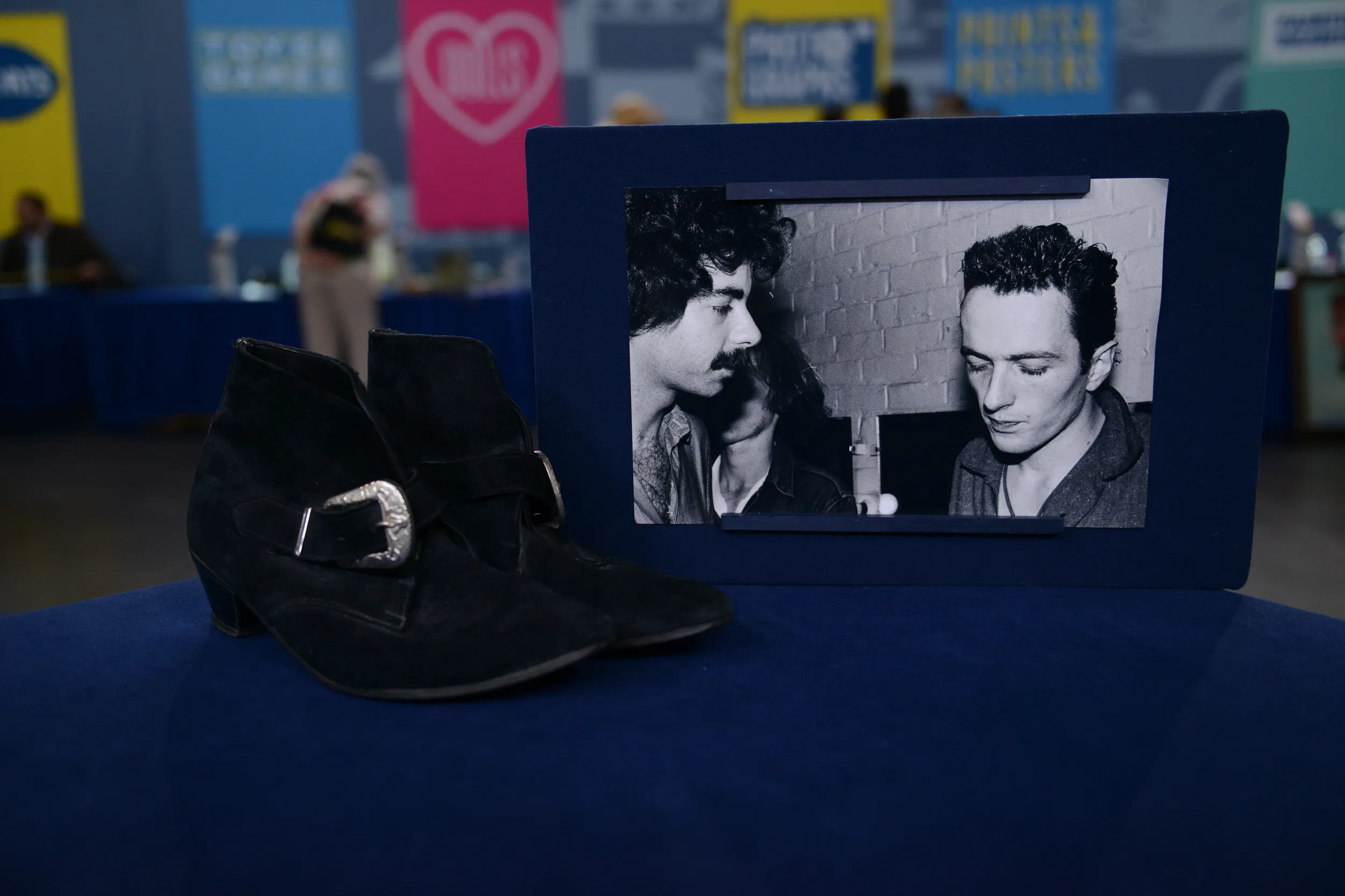
appraisal
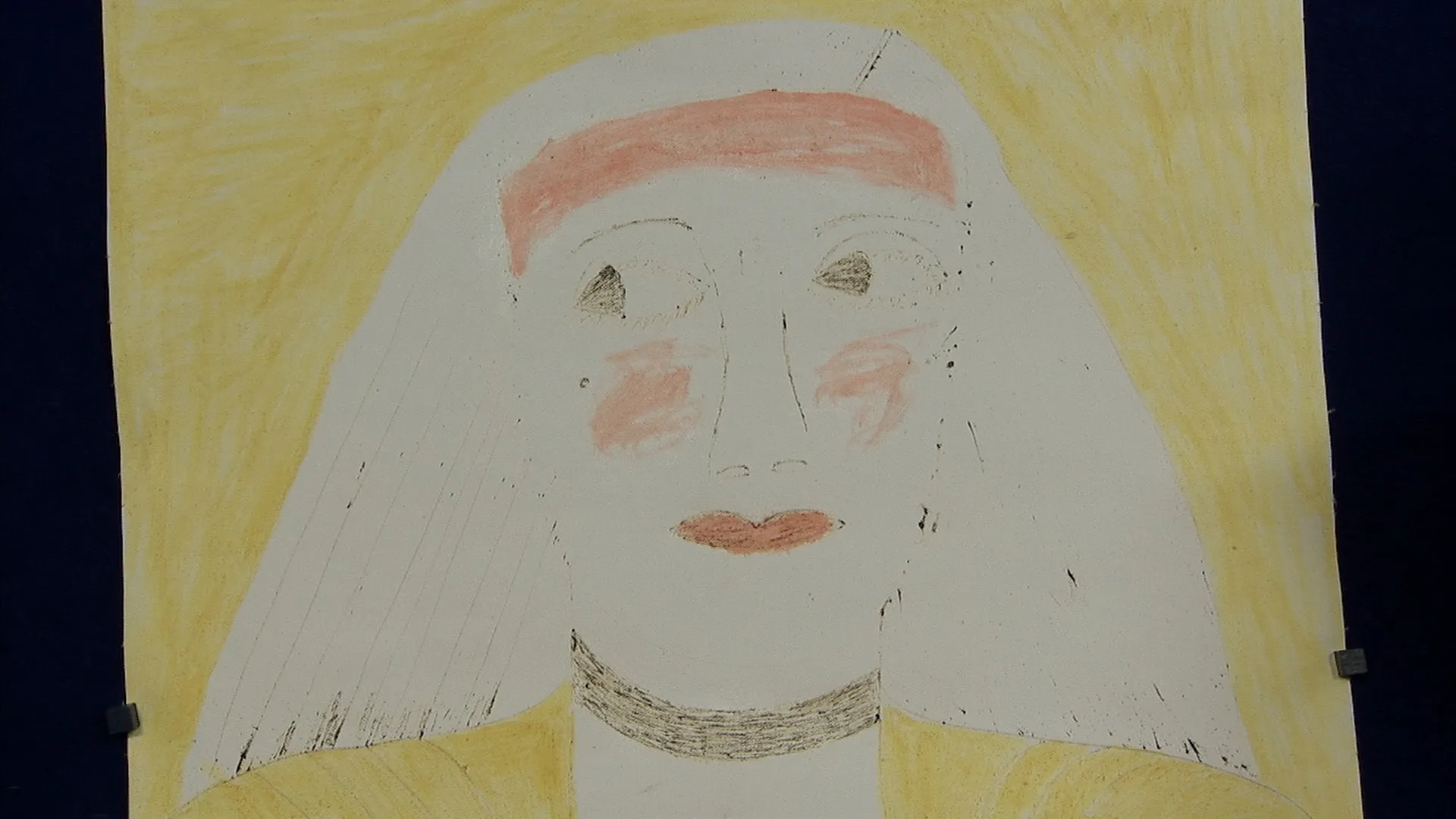
appraisal

appraisal

appraisal

appraisal
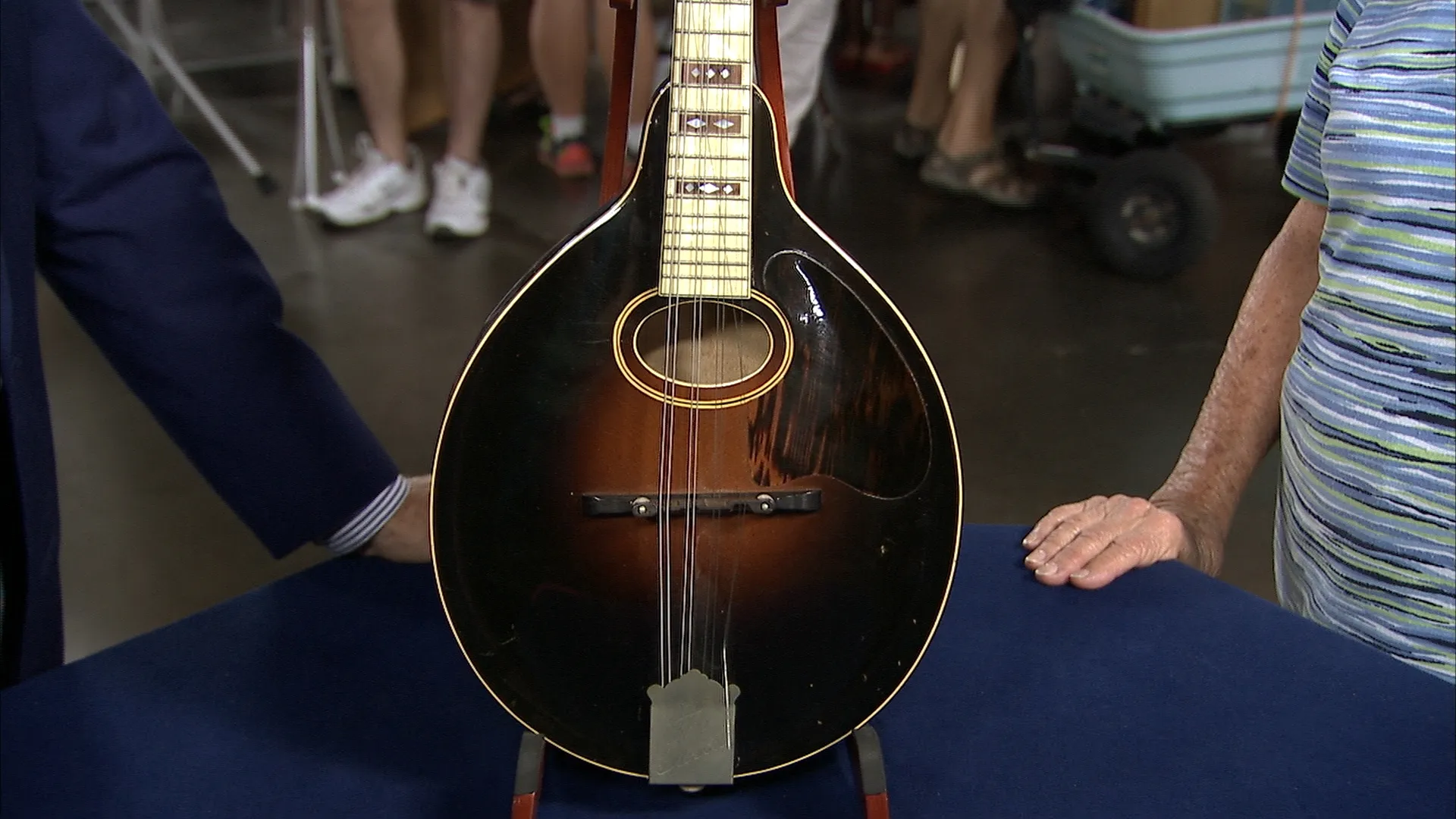
appraisal
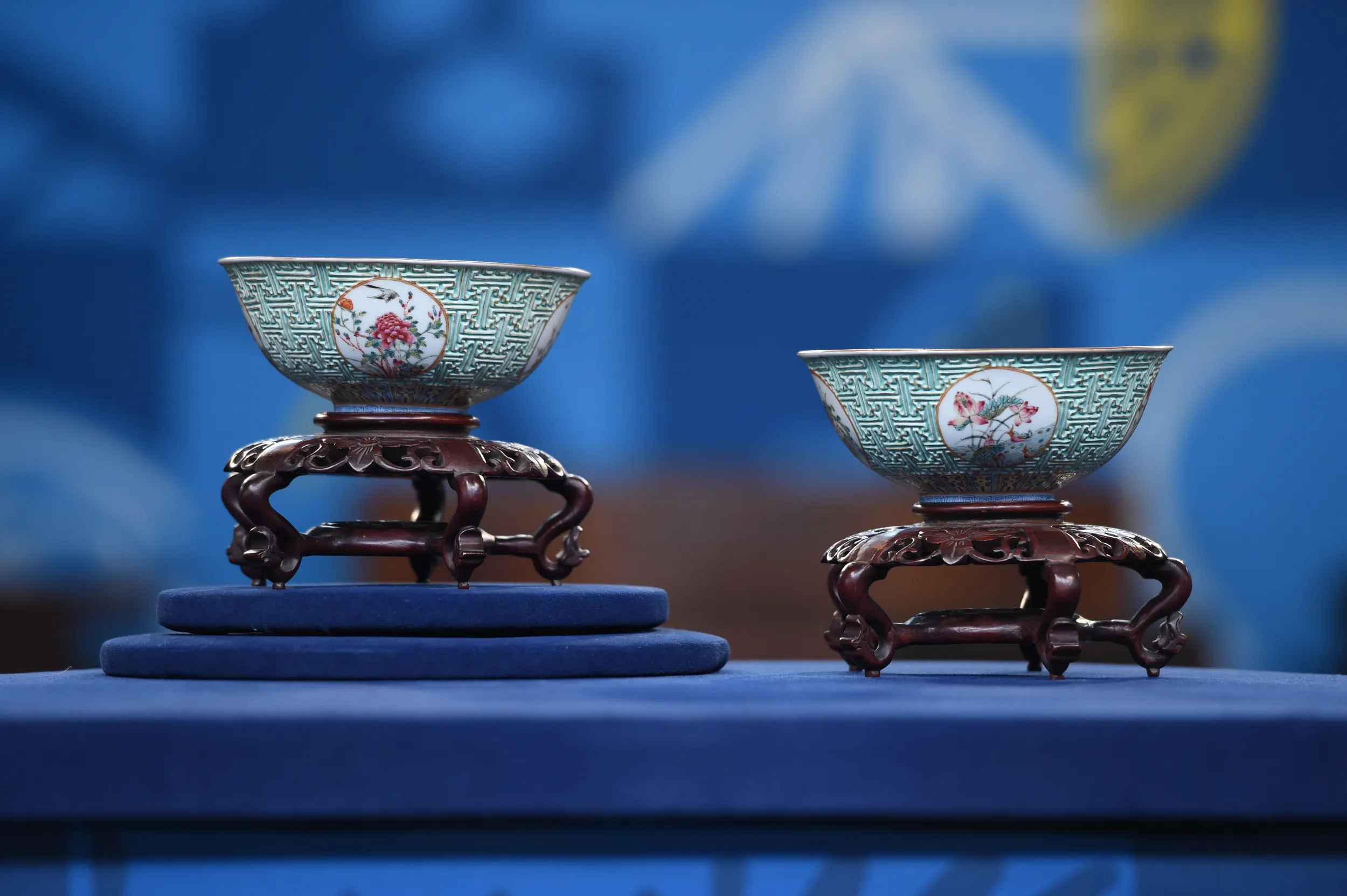
appraisal

appraisal
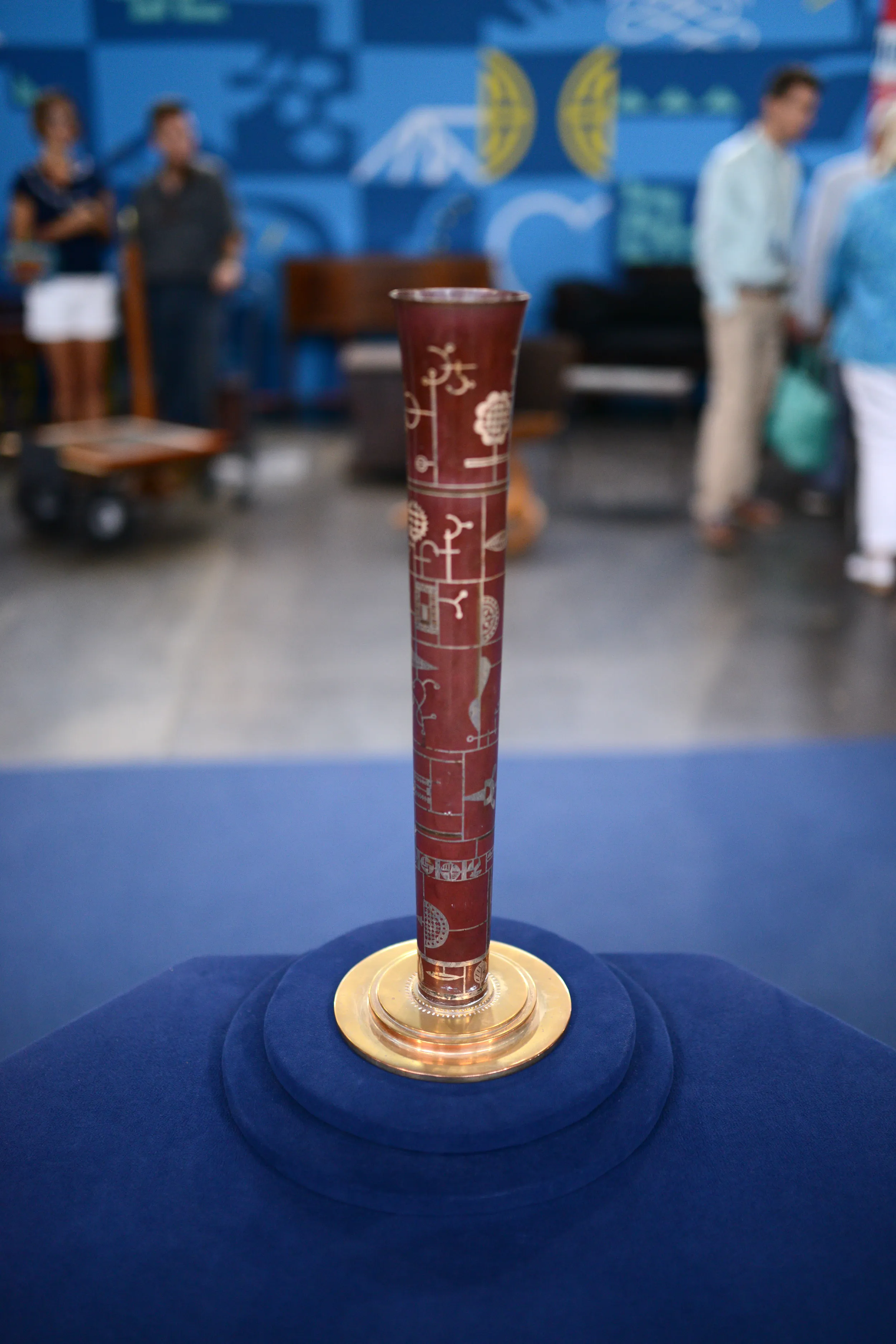
appraisal

appraisal
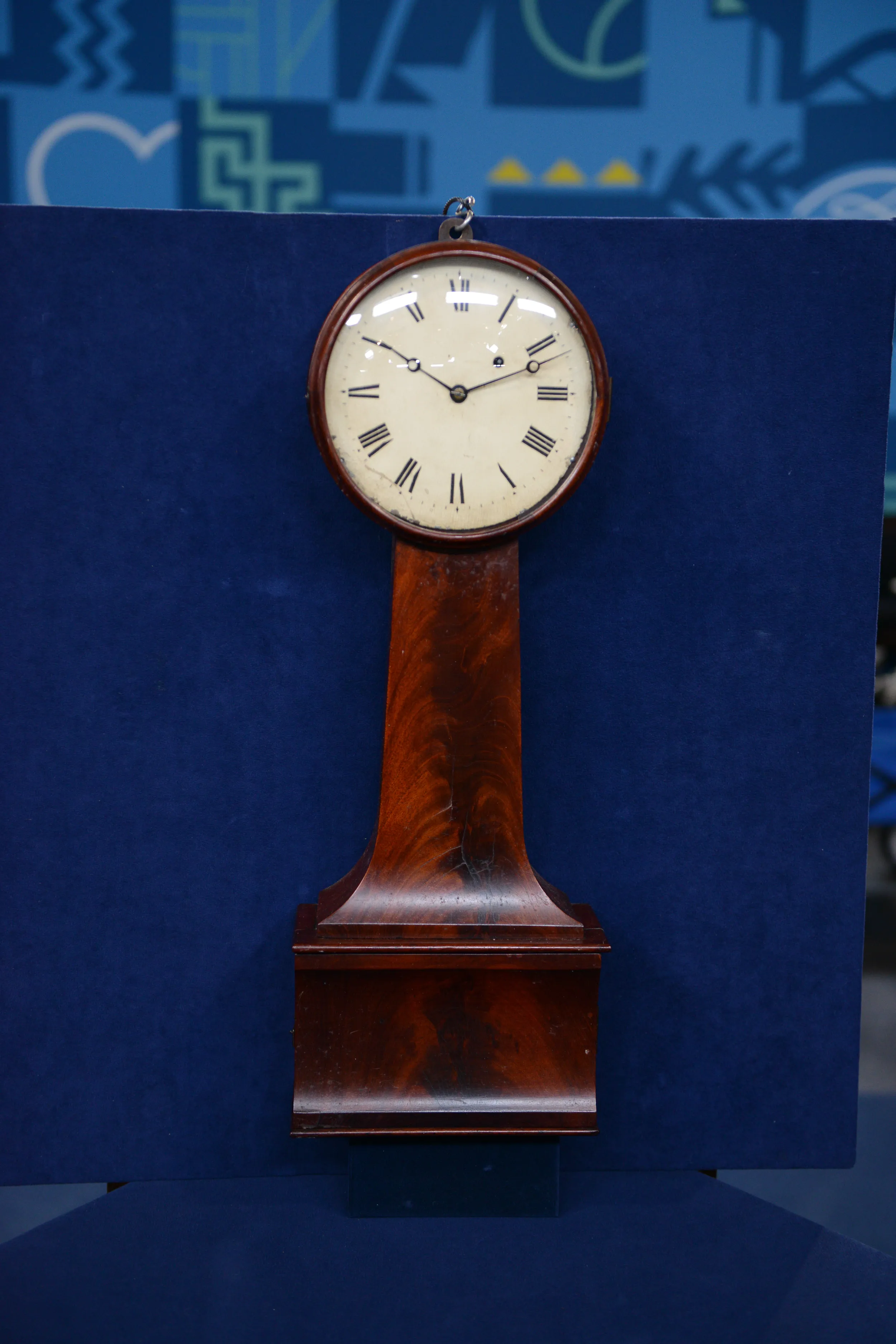
appraisal
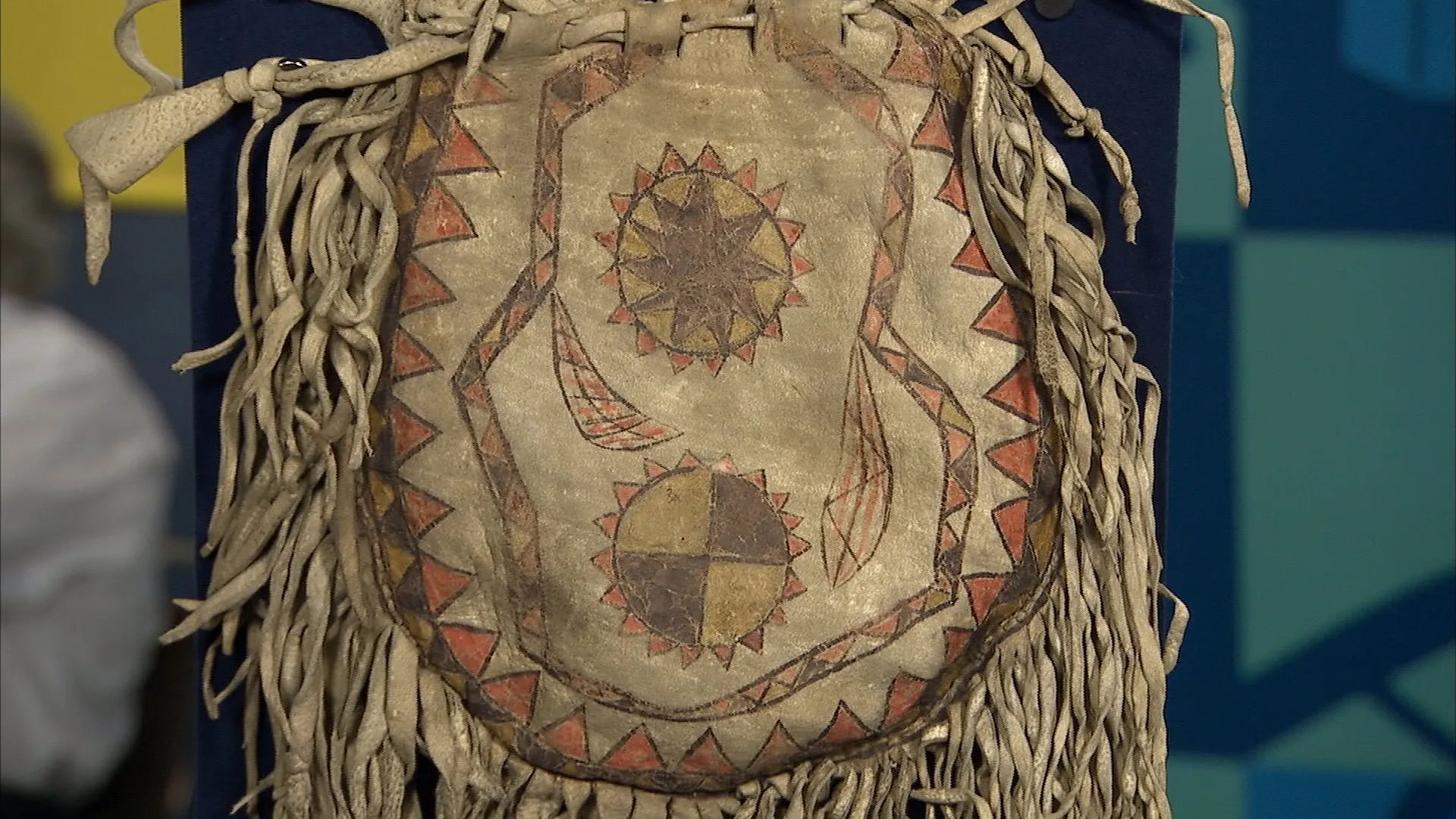
appraisal

appraisal
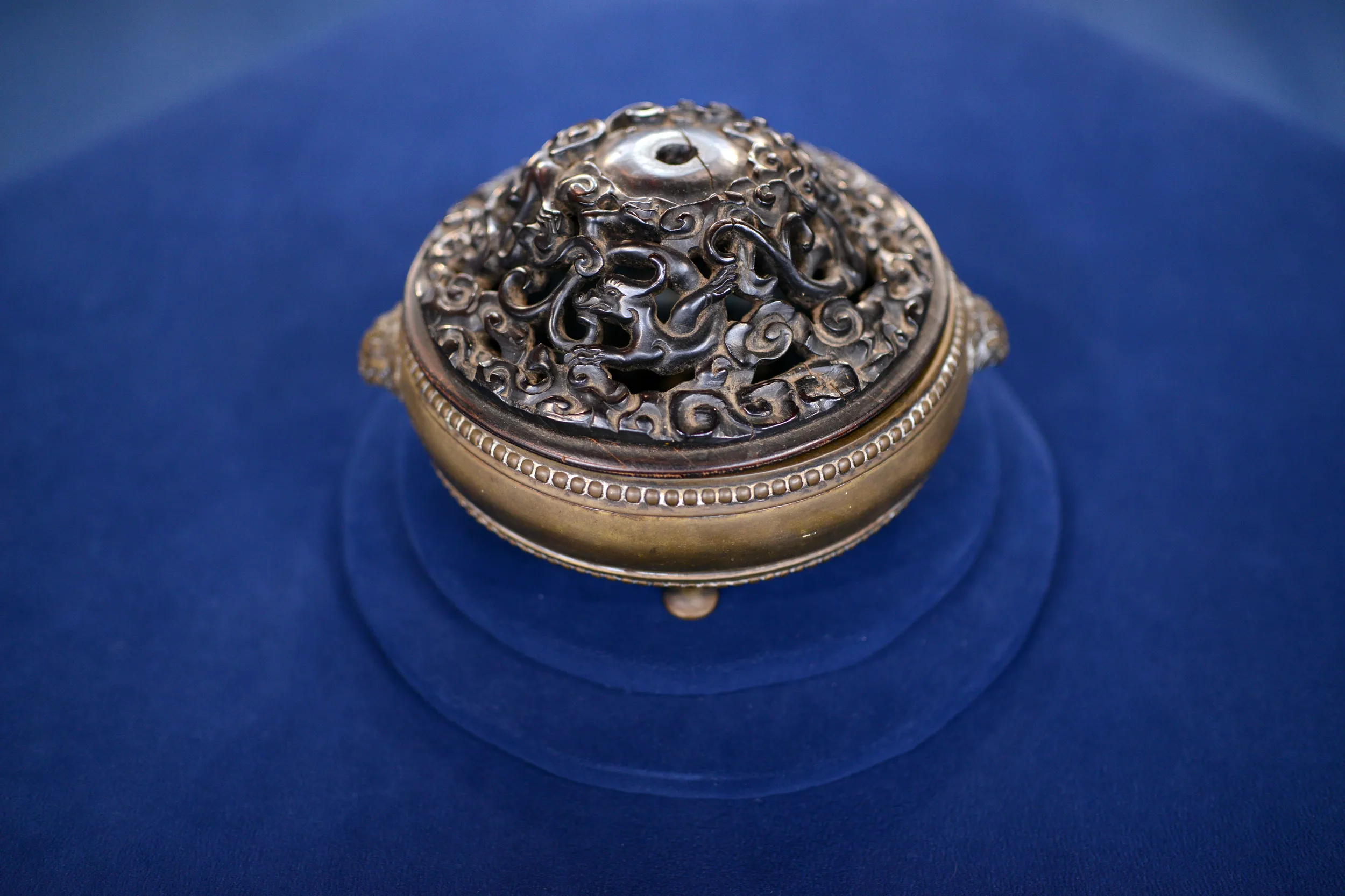
appraisal

appraisal
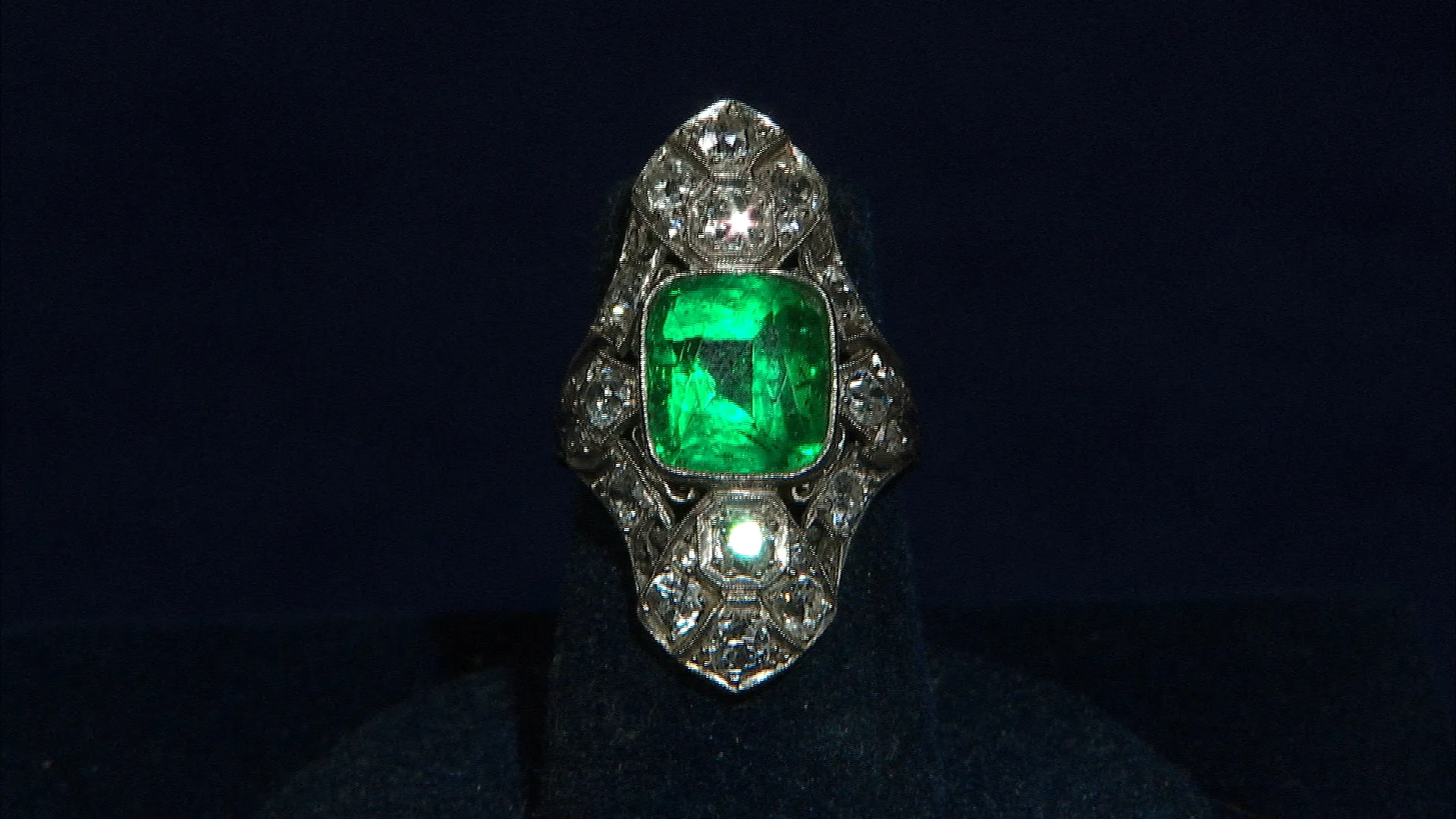
appraisal
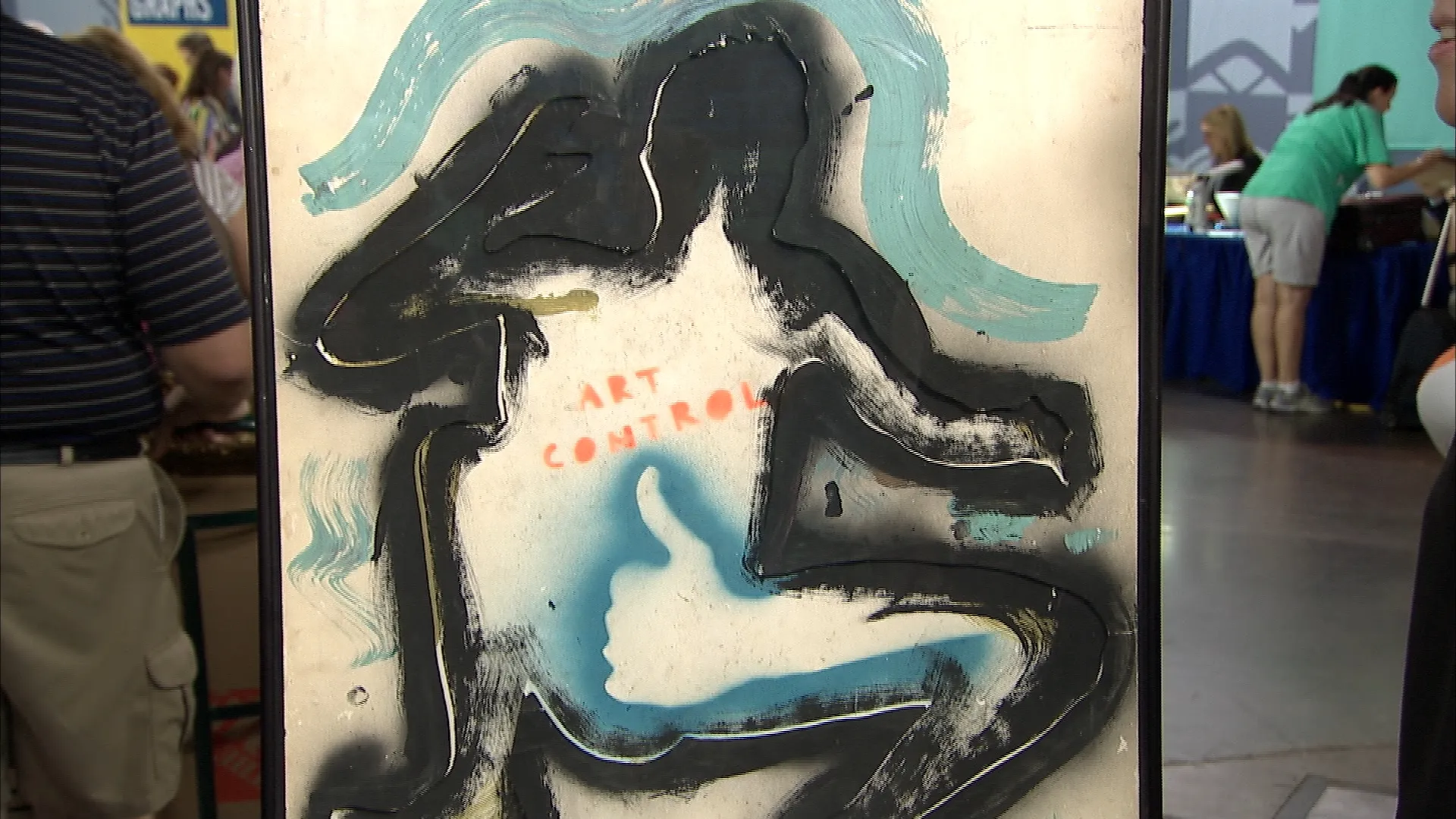
appraisal

appraisal














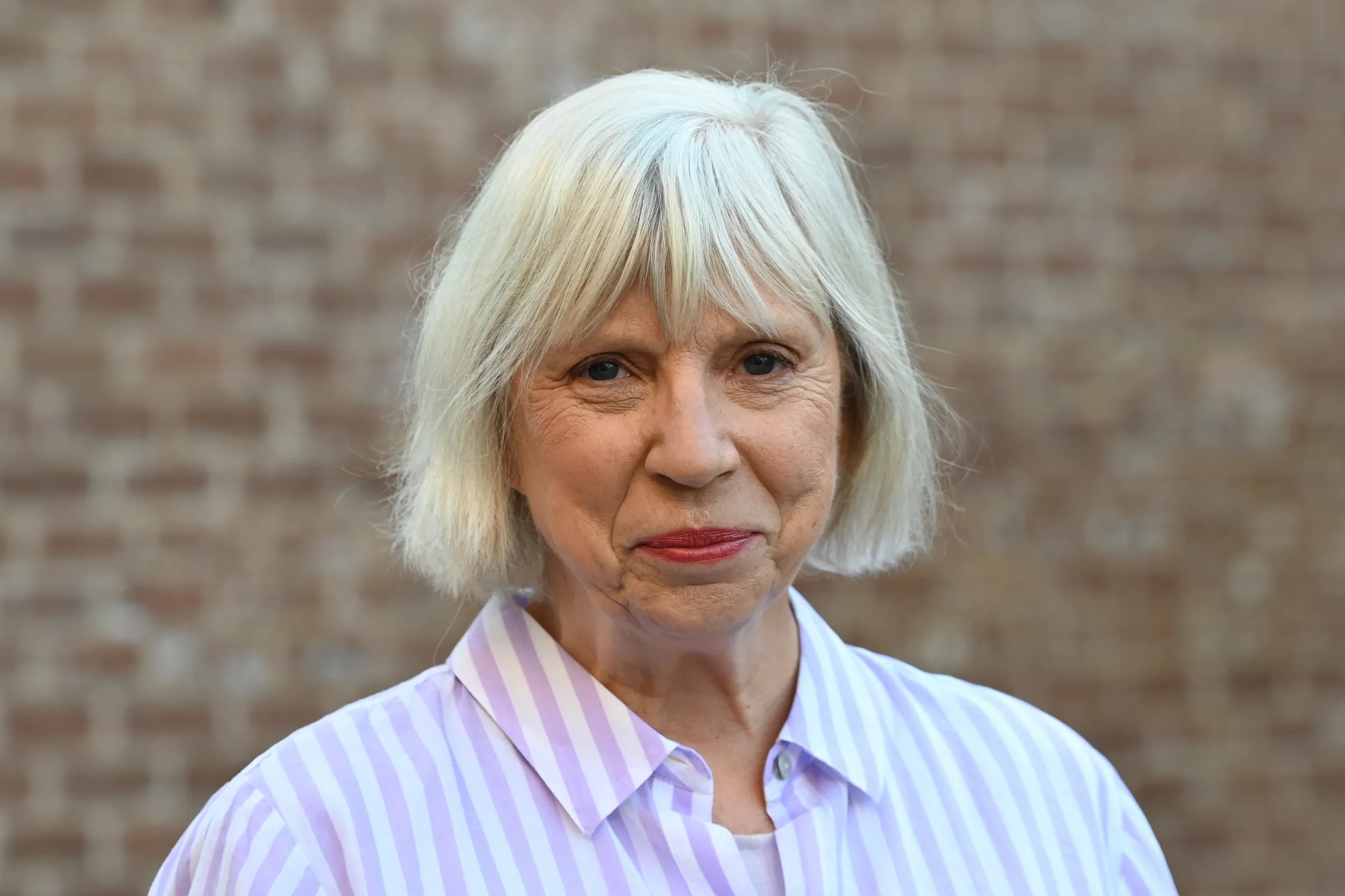




Learn more about the eccentric self-taught artist and local icon who lived, worked, and sold her art on the Chicago streets.
A weekly collection of previews, videos, articles, interviews, and more!
Funding for ANTIQUES ROADSHOW is provided by Ancestry and American Cruise Lines. Additional funding is provided by public television viewers.
ANTIQUES ROADSHOW is a trademark of the BBC and is produced for PBS by GBH under license from BBC, Worldwide. PBS is a 501(c)(3) not-for-profit organization.
A weekly collection of previews, videos, articles, interviews, and more!
Test your appraisal knowledge in ROADSHOW's new game — Price Range!



